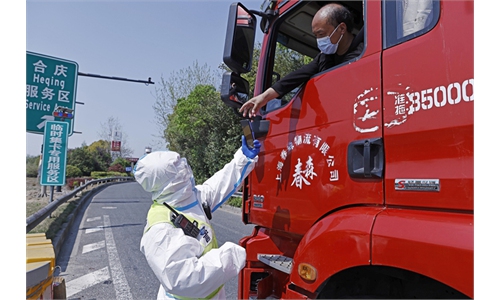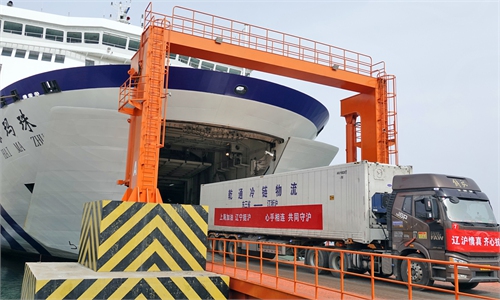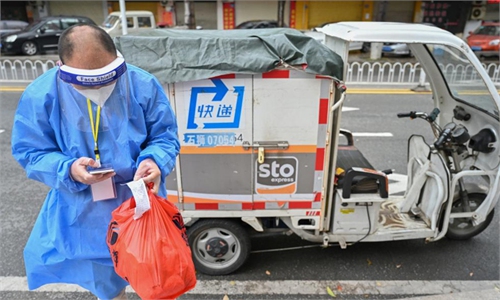
Volunteers in Shanghai distribute commodities to residents. Photo: VCG
The major arteries of national trunk highways in China are now basically open and logistics in key areas such as Shanghai, where COVID-19 has hit hard, have gradually improved after multiple rounds of top-down policies, China's transport ministry said on Tuesday.Transportation capacity and volume indicators continue to improve, and the rectification of excessive measures that previously battered logistics and supply transport has achieved initial results, Shu Chi, spokesperson for the Ministry of Transport, told a press conference.
In order to allow vehicles pass freely, 22 provinces or municipalities, including Shanghai, North China's Tianjin and Hebei, and East China's Jiangsu, Zhejiang and Fujian had all launched nationally unified passes for key material transport as of Monday, significantly improving transportation of key materials.
Closures of service areas and toll stations on highways have been reduced. As of Monday, a total of eight highway toll stations were closed across the country, accounting for only 0.07 percent of the total, a decrease of two from the previous day, data from the ministry showed.
A total of 23 provinces or municipalities, including Beijing, Tianjin and North China's Shanxi, have no expressway toll stations or service areas that are temporarily closed.
The transport ministry vowed to further ramp up efforts to ensure the smooth flow of transportation networks, and said that expressway service areas and toll stations are fully open. Meanwhile, it will promote the standardized establishment of epidemic prevention checkpoints.
"It is necessary to continue making efforts in the implementation of precise management and control, avoid extensive measures and prohibit repeated nucleic acid testing," said Shu.
The ministry also provided support for regions like the Yangtze River Delta and Pearl River Delta regions by unblocking major transportation arteries, promoting logistics circulation, and strengthening transportation guarantees for key materials.
Since the beginning of March, the growth rate of the logistics sector has been overall steady, but it has also been slowing down amid an increasingly complex international environment and the domestic resurgence of COVID-19 cases, the China Federation of Logistics & Purchasing said.
In the first quarter, revenue for the country's logistics sector totaled 84 trillion yuan ($12.8 trillion), an increase of 6.2 percent on a yearly basis.
In terms of scale, the ratio of total social logistics to GDP rose to 3.1, the highest level since 2020, data from the federation showed on Tuesday, indicating that logistics demand has provided a strong guarantee for economic development amid multiple pressures.
Global Times



